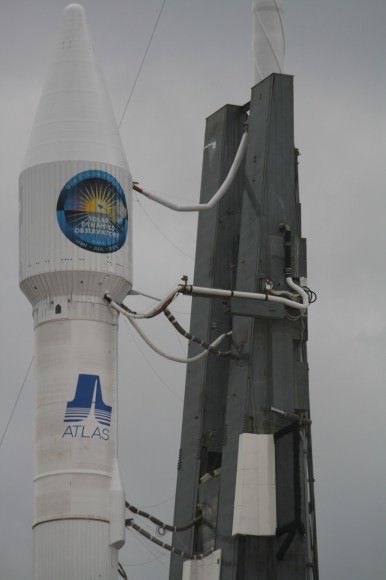Some scribblenotes from news conferences.
First, weather is only 40% go tomorrow (well, today now) due to possible clouds, but mostly wind. 60% go for 24 hour delay. Thay can launch any day during 10:26-11:26 AM EST window.
Expected wind is 310 d at 24-28 kn. Constraint at that angle is 23 knots. At 300 degrees wind direction contraint is 30 knots, at 320 degrees, 20 knots. So wind direction is critical. They will hold at T- 4 min to see how the winds go (assuming no low clouds).
Atlas 5 burn is 243 seconds. Launch at azimuth 93.6 degrees. First Centaur burn is 11 minutes placing it into a 95 x 3700 nm orbit for 87 minutes, then a 2nd burn of 195 seconds to GTO. 3 minutes later the spacecraft will separate (covered on NASA TV) and the solar arrays open. It will take 3 weeks to get to geosynchronous orbit, with a total of 2 months commissing time.
Data rate will be 1.5 Terabytes/day so there will be no on craft storage, rather data is directly beamed to twin 18 meter dishes on ground. Primary Mission is 5 years, with propellant for 10.
It will image the sun at 8 wavelengths every 10 seconds with IMAX level resolution. Also do Extreme Ultraviolet spectrography, and helioseismology.
MW


















